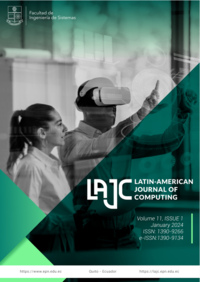Exploring Topics in Information Technology Open Educational Resources through the LDA Algorithm
Keywords:
metadata, OER, LDA, text mining, topic modelingAbstract
This paper explores the application of machine learning and text mining techniques to discover OER issues in the context of Engineering Education. Applying the LDA (Latent Dirichlet Allocation) algorithm, themes are extracted from OER, it is possible to consider them as additional metadata. This augmentation serves to enhance the description and categorization of OER. Furthermore, this study introduces a methodology to automatically identify topics in open educational resources. In this research, a dataset of 80 OER was obtained from the Skills Commons repository. The highest coherence value achieved at 0.42, emerged when the number of topics was 9 in the LDA model. These nine topics are closely associated with Information Technology Education.
Downloads
Downloads
Published
Issue
Section
License
Copyright Notice
Authors who publish this journal agree to the following terms:
- Authors retain copyright and grant the journal right of first publication with the work simultaneously licensed under a Creative Commons Attribution-Non-Commercial-Share-Alike 4.0 International 4.0 that allows others to share the work with an acknowledgement of the work's authorship and initial publication in this journal.
- Authors are able to enter into separate, additional contractual arrangements for the non-exclusive distribution of the journal's published version of the work (e.g., post it to an institutional repository or publish it in a book), with an acknowledgement of its initial publication in this journal.
- Authors are permitted and encouraged to post their work online (e.g., in institutional repositories or on their website) prior to and during the submission process, as it can lead to productive exchanges, as well as earlier and greater citation of published work.
Disclaimer
LAJC in no event shall be liable for any direct, indirect, incidental, punitive, or consequential copyright infringement claims related to articles that have been submitted for evaluation, or published in any issue of this journal. Find out more in our Disclaimer Notice.










